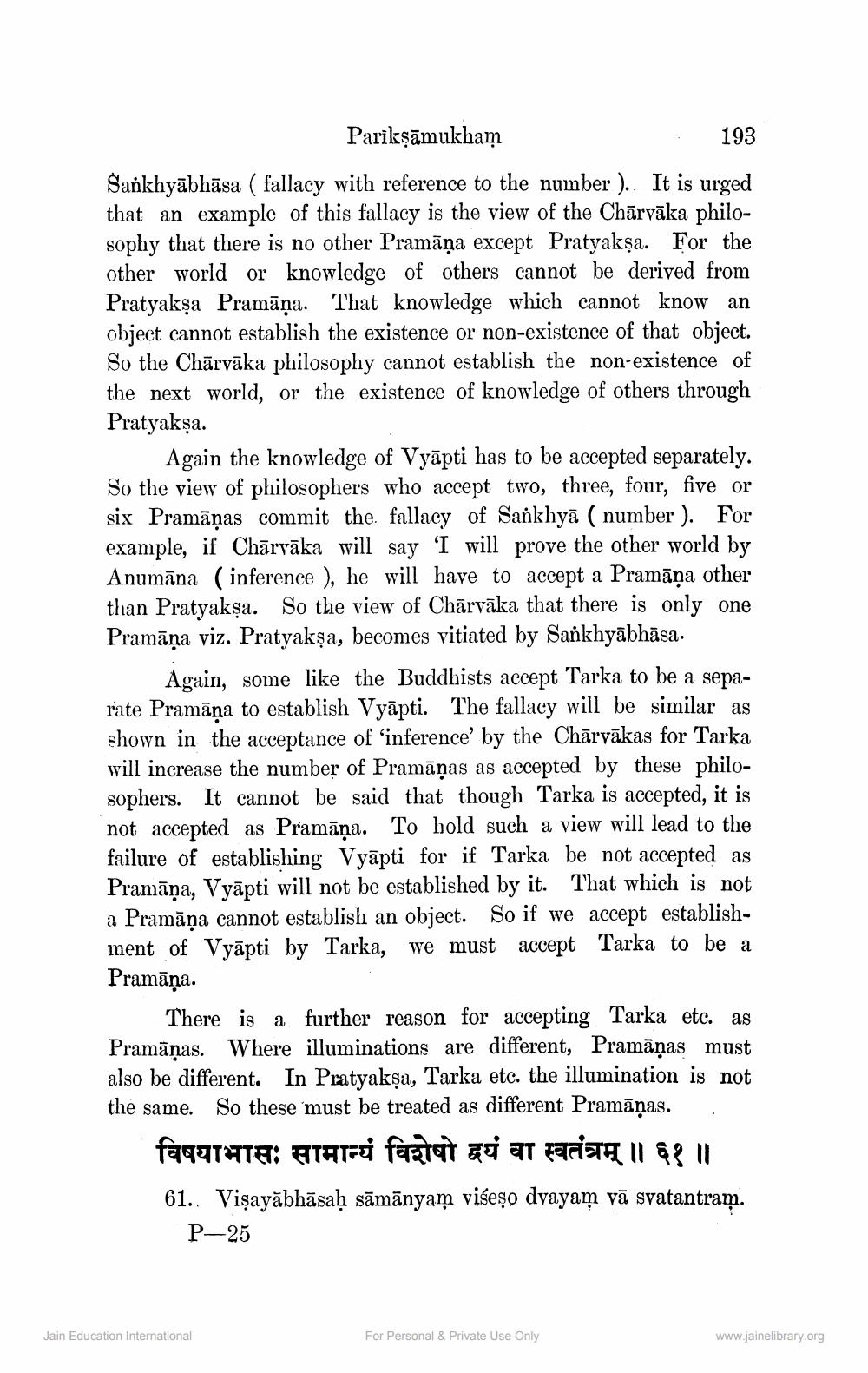________________
Pariksāmukham
193
Sankhyābhāsa ( fallacy with reference to the number ). It is urged that an example of this fallacy is the view of the Chārvāka philosophy that there is no other Pramāņa except Pratyakşa. For the other world or knowledge of others cannot be derived from Pratyakşa Pramāņa. That knowledge which cannot know an object cannot establish the existence or non-existence of that object. So the Chārvāka philosophy cannot establish the non-existence of the next world, or the existence of knowledge of others through Pratyakşa.
Again the knowledge of Vyāpti has to be accepted separately. So the view of philosophers who accept two, three, four, five or six Pramāṇas commit the. fallacy of Sankhyā (number). For example, if Chārvāka will say 'I will prove the other world by Anumāna (inference ), he will have to accept a Pramāņa other than Pratyakşa. So the view of Chārvāka that there is only one Pramāņa viz. Pratyakşa, becomes vitiated by Sankhyābhāsa.
Again, some like the Buddhists accept Tarka to be a separate Pramāņa to establish Vyāpti. The fallacy will be similar as shown in the acceptance of ‘inference' by the Chārvākas for Tarka will increase the number of Pramāṇas as accepted by these philosophers. It cannot be said that though Tarka is accepted, it is not accepted as Pramāņa. To hold such a view will lead to the failure of establishing Vyāpti for if Tarka be not accepted as Pramāņa, Vyāpti will not be established by it. That which is not a Pramāṇa cannot establish an object. So if we accept establishment of Vyāpti by Tarka, we must accept Tarka to be a Pramāņa.
There is a further reason for accepting Tarka etc. as Pramāṇas. Where illuminations are different, Pramāṇas must also be different. In Pratyakşa, Tarka etc. the illumination is not the same. So these must be treated as different Pramāṇas.
विषयाभासः सामान्य विशेषो द्वयं वा स्वतंत्रम् ॥ ६१॥ 61.. Visayābhāsaḥ sāmānyam višeşo dvayam vā svatantram.
P-25
Jain Education International
For Personal & Private Use Only
www.jainelibrary.org




